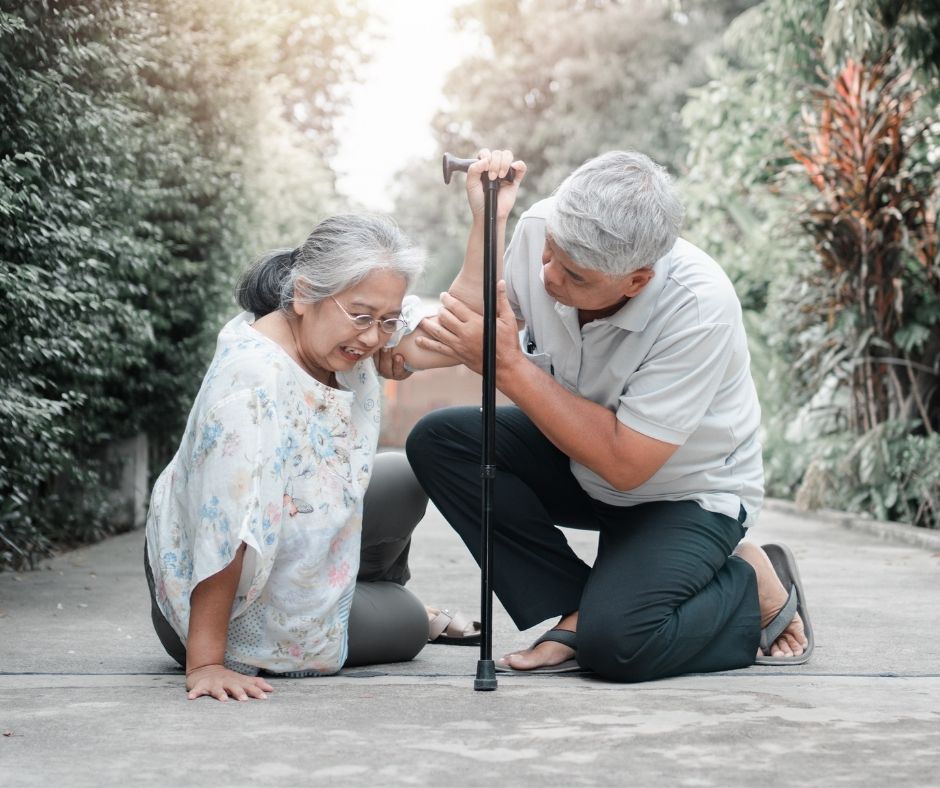
4 minute read
Facts on Falls
Falls are, unfortunately, a common occurrence.
Falls are a serious health issue among seniors. While falls in the general population usually come about due to dangerous work or leisure activities, older adults are at greater risk of falling in their day-to-day activities. Medications, vision impairments, and general weakness can combine with environmental factors to put older adults in danger of seriously injuring themselves in any fall.
Advertisement

Every 11 seconds, an older adult is treated in the emergency room for a fall.

According to the National Council on Aging, one in four Americans over 65 falls each year.

In 2014, older Americans experienced 29 million falls, resulting in 7 million injuries.

Every 19 minutes, an older adult dies from a fall.
Falls can cause serious injuries, and present a rising cost to society.
Outcomes of falls range from the minor cuts and bruises that anyone could expect to the worst possible results—disability and death. Overall, unfortunately, because of pre-existing health issues, lower bone and muscle strength, and other factors, falls among the elderly tend to have worse outcomes than among the general population. This leads to substantial costs both to the families of fall victims and to society at large.
More than 300,000 people are hospitalized each year from broken hips, and 95% of these fractures are the result of a fall, according to the Centers for Disease Control.
Falls are the leading cause of fatal injury among older adults, and the most frequent reason for non-fatal trauma.
Falls take a psychological toll, as well: up to 50% of those who fear falling limit or exclude social or physical activities because of this fear.
Falls in adults aged 65+ are the leading cause of head injuries and broken hips, with 1 in 10 falls resulting in serious injuries, such as hip fracture, other fractures, subdural hematoma, or traumatic brain injury.
Falls are the most common cause of traumatic brain injuries for people in every stage of life, and result in 800,000 total hospitalizations in America each year. Falls result in more than 2.8 million injuries treated in emergency departments annually, including over 800,000 hospitalizations and more than 27,000 deaths.
A full 80% of falls happen in the bathroom, according to National Institute on Aging.
In the elderly living in the community, 30 to 50% of falls are due to environmental causes, e.g., poor lighting, slippery floors, and uneven surfaces.
Many factors contribute to falls.
A person’s health is a significant factor in predisposing them to falls, along with other related factors like medications and recent surgery. Environmental challenges related to the loss of strength and balance as people age also make falls more likely, and some demographic factors contribute. The top contributing factors to fall risk are, in order: age, being female, a history of previous falls, and a fear of falling.
Living alone may also be a risk factor in falls, and 2 million senior Americans may be shut-ins.
Adults lose 10% in strength and endurance for every decade after the age of 30. Combined with a similar loss in muscle power (30% per decade), this leads to a decrease in physical function among seniors that puts them at greater fall risk.
Almost a quarter of 65+ adults characterized themselves as having ambulatory disabilities. e.g., difficulty walking or climbing stairs.
Benzodiazepines in older people is associated with a 44% increase in risk of hip fracture and night falls.
Types of drugs that contribute to falls include sedatives and antidepressants, and, to a lesser extent, drugs for lowering blood pressure.
Vascular diseases, chronic obstructive pulmonary disease, depression, and arthritis are each associated with a 32% increased risk of falls among the elderly Fortunately, there are ways to reduce the risks of falling.
Source: Aging.com.










